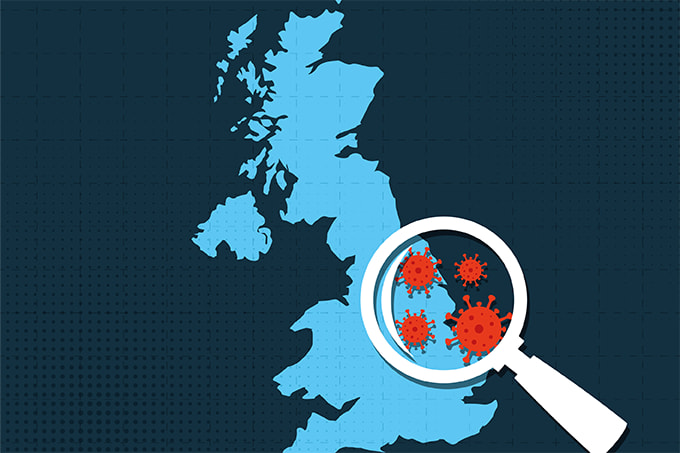In an era of rising antimicrobial resistance, preventing healthcare-associated infections (HAIs) is more important than ever. The logic is simple: more infections mean more treatments, which raises the risk of resistance. Since HAIs happen in healthcare settings, well versed medical staff have a chance to prevent outbreaks.
HAIs are a major threat to vulnerable hospital patients, with about 1 in 31 affected at any time (1). In the US, over 1 million HAIs occur yearly, leading to thousands of deaths. The Centers for Disease Control and Prevention (CDC) tracks HAIs by infection type or medical device, such as bloodstream infections and surgical site infections.

Ayaz Majid
Some pathogens, like methicillin-resistant Staphylococcus aureus (MRSA), Clostridioides difficile (C. difficile), and Candida auris (C. auris), are tracked individually due to their high resistance and treatment challenges. C. auris in particular has proven particularly challenging to treat due to its widespread drug resistance (2) and was recently deemed an urgent antimicrobial resistance concern by the CDC due to its rapid spread and imposing threat on healthcare facilities.
After a rise in HAIs during the early COVID-19 pandemic, infection rates in hospitals dropped significantly in 2022 (3). Over 30 US states improved on at least two types of infections. However, long-term care and rehabilitation facilities did not see the same equivalent declines.
HAI risk factors
Healthcare facilities have successfully reduced their rates of healthcare-associated infections (HAIs) through the identification of main risk factors. However, certain surgeries and invasive procedures, like using central lines, catheters, or ventilators, continue to result in increased infection risks. Although sterilization has improved, devices left in place for long periods still carry infection risks. Surgical sites are also prone to infection, so antiseptic protocols and frequent cleaning help prevent HAIs.
Staying in the hospital for extended periods, especially in intensive care, raises the risk of exposure to infections. Vulnerable patients, such as the elderly, immunocompromised individuals, and newborns are more likely to get HAIs – requiring additional precautions. Poor hygiene and inconsistent sterilization, like staff not washing hands properly or cleaning rooms inadequately, can increase infection rates.
HAIs can also spread through asymptomatic carriers, including travelers who unknowingly bring pathogens from other regions. This global movement makes it easier for unfamiliar germs to enter healthcare facilities and potentially cause infections.
Preventative measures
While the threat of HAIs requires constant vigilance, they can usually be controlled with well-established infection prevention methods. Practices like proper handwashing, using personal protective equipment, isolation of infected patients, and thorough sterilization of equipment and surfaces are effective in stopping the spread of pathogens. Regular monitoring and reporting help healthcare facilities measure their success and share solutions.
Antimicrobial and diagnostic stewardship programs aim to reduce unnecessary antibiotic use to prevent antibiotic resistance. Diagnostic tools can help to quickly identify the cause of infections, allowing healthcare workers to reduce the use of broad-spectrum antibiotics, especially in viral cases. For example, with C. difficile, specific testing algorithms ensure only those with active infections are tested.
HAI outbreaks can be triggered by asymptomatic carriers spreading pathogens on surfaces like sinks and doorknobs. Identifying these patients is key to preventing further infections through measures like patient isolation and the use of personal protective equipment (PPE), such as gowns and masks. Faster molecular tests, like PCR, help identify colonized (asymptomatic carriers) or actively infected patients, allowing healthcare teams to act quickly to protect others.
Molecular tests
To prevent HAI outbreaks and support antimicrobial and diagnostic programs, rapid detection of pathogens is crucial for timely isolation and treatment. Traditional culture-based tests take three to five days, which is too slow to identify patients and stop potential outbreaks.
PCR-based molecular tests, however, provide faster and more accurate results, sometimes within hours, helping improve HAI outcomes. These tests are easy to use and allow labs to process samples quickly without overwhelming their capacity, which is important for managing and preventing disease.
For pathogens like MRSA, C. difficile, and C. auris, only high-risk patients should be tested. For example, C. difficile tests are recommended only for those with active infections (4), while C. auris tests are advised for patients exposed to high-risk environments or medical devices like ventilators or central lines (5).
Overall, regular PCR testing of patients at risk of HAIs could be an effective strategy to prevent outbreaks. PCR assays offer targeted tests for suspected cases and broader (syndromic) tests for severe, unclear infections. PCR technology offers a key role in fast HAI detection and prevention, helping labs contribute to healthcare infection control and patient safety with impactful diagnosis by supporting antimicrobial and diagnostic stewardship efforts.
Credit: Collage created using Adobe Stock images
References
- AHRQ, “AHRQ’s Healthcare-Associated Infections Program” (2024). Available at: https://www.ahrq.gov/hai/index.html
- M Lyman et al., Ann Intern Med, 176, 4 (2023). PMID: 36940442.
- CDC, “Current HAI Progress Report” (2022). Available at: https://www.cdc.gov/healthcare-associated-infections/php/data/progress-report.html
- CDC, “Laboratory Resources for HAIs” (2024). Available at: https://www.cdc.gov/healthcare-associated-infections/php/lab-resources/index.html
- CDC, “Screening Recommendations for Healthcare Facilities” (2024). Available at: https://www.cdc.gov/candida-auris/hcp/screening-hcp/index.html




